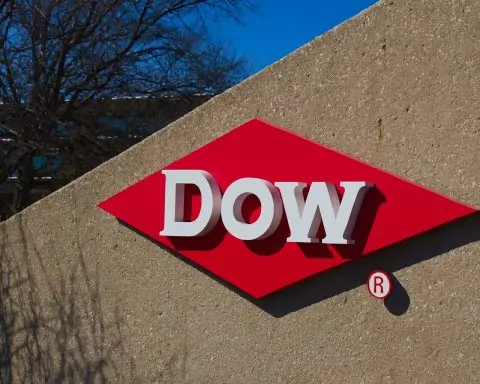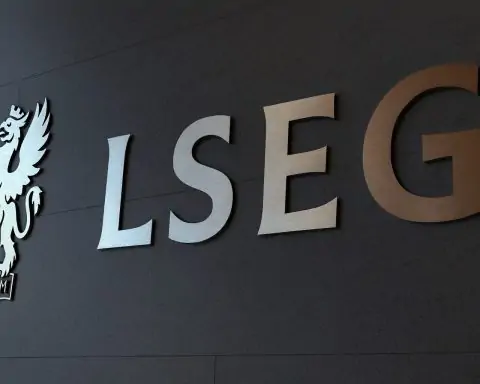- HMC stock price hovers around $31.50 as of Oct. 27, 2025, little changed after a mid-month bounce and about 10% below its 52-week high [1]. Shares are roughly flat year-to-date, though Honda has returned ~125% over five years [2].
- EV strategy overhauled: Honda is shifting focus to hybrids amid a cooled EV market. It cut EV investment by 30% (to ¥7 trillion) and trimmed its 2030 EV sales target to ~20% of volume [3], emphasizing hybrid models as a bridge. A joint affordable EV project with GM was paused mid-2025 due to market conditions [4], and Honda ended production of its U.S. Acura EV in September amid weak demand [5] [6].
- Business momentum and output rebounding: Global auto production soared 104% year-on-year in September, hitting 310,000 units as supply issues eased [7]. Honda’s latest earnings beat estimates (Q2 EPS $0.97 vs $0.51 expected) [8], and the firm raised its FY2025 profit outlook, aided by a weak yen that’s boosting overseas earnings [9] [10].
- Analysts cautious but see value: The consensus on HMC is “Hold” [11]. Zacks notes Honda “is poised to gain from rising hybrid adoption and partnerships… [but] declining demand and high capital requirements remain a concern” [12]. At ~9.5× forward earnings, Honda trades well below the auto industry’s ~19× P/E, signaling potential undervaluation [13] [14]. One analyst’s target implies ~24% upside (to ~$39) for HMC [15], though overall sentiment remains measured.
- 2025 outlook and catalysts: Investors are watching Honda’s EV pivot and partnerships. The company just took a strategic stake in India’s OMC Power to co-develop clean energy storage using second-life EV batteries [16] [17]. Honda also unveiled new “Honda 0 Series” EV prototypes (sedan and SUV) at the Japan Mobility Show, signaling future models for 2026 [18]. Meanwhile, geopolitical factors like a U.S.–Japan trade deal cutting tariffs (25%→15% in 2025) and yen weakness provide tailwinds [19] [20], even as rising interest rates and China’s economic uncertainty pose risks.
HMC Stock Price & Recent Performance
Honda Motor Co.’s American Depositary Shares (NYSE: HMC) traded at $31.52 at Friday’s close (Oct. 24) [21]. The stock has been range-bound in the low-$30s this month, ticking up mid-October then easing slightly. On Oct. 22, HMC jumped ~1.8% intraday and closed at $31.84 – a brief rally attributed to broader market strength [22] – before settling back to the $31.5 level by week’s end. Year-to-date, Honda is roughly flat, with recent gains erasing a late-summer dip; the shares are “only a small dip away from where [they] started the year,” according to Simply Wall St analysis [23]. Over a longer horizon, Honda has delivered strong returns – about +125% over the past five years [24] – reflecting steady growth in its auto and motorcycle businesses.
Despite this solid long-term trajectory, HMC remains ~10% below its 52-week high of $34.89 [25] set in early 2024. The stock’s 52-week low was $23.41 [26], hit during last year’s market downturn. At current prices, Honda’s market capitalization stands near $49 billion, with a moderate valuation of ~11 times earnings [27] [28]. By comparison, the Nikkei 225 index is up strongly in 2025, aided by a weak yen, which has enhanced Japanese exporters’ earnings [29]. Indeed, the yen’s slide (around ¥147 per USD in Aug 2025) has been a tailwind for Honda, boosting repatriated revenue and profit margins on its overseas sales [30] [31]. This currency effect – effectively a “de facto tax cut” for exporters – is one reason Honda’s stock is seen as a value play in Japan’s auto sector [32] [33].
Short-term trading momentum for HMC has been mixed. The stock climbed in the first half of October but pulled back ~6% in late September [34] amid global market volatility and concerns about EV demand. It then recovered in mid-October as investors rotated back into value stocks. Honda’s trailing 5-day performance is roughly flat, and volume has been ordinary (~750,000 shares average) [35]. With Q3 earnings due in a couple of weeks (Honda’s fiscal Q2 report is expected in early November), many traders appear to be in “wait-and-see” mode. In the interim, headline news and macro trends are driving the stock more than fundamentals – from currency moves to industry developments (like the UAW labor deal and commodity prices). Overall, Honda’s stock price stability in recent days belies the flurry of news surrounding the company’s strategy, which could set the stage for bigger moves as 2025 draws to a close.
EV Strategy Overhaul and Key News
Honda has made headlines in 2025 by recalibrating its electric vehicle (EV) strategy and doubling down on what it does best – fuel-efficient hybrids and motorcycles – in response to market realities. EV demand has grown slower than expected in key regions, prompting Honda to adjust course. In a May 2025 briefing, CEO Toshihiro Mibe acknowledged a “slowdown in the expansion of [the] EV market” due to changing regulations and trade policies [36]. Consequently, Honda realigned its electrification roadmap: it slashed planned EV investment by 30% (to roughly ¥7 trillion through 2030) and lowered its 2030 EV sales goal. Previously targeting 30% of its vehicles to be pure electric by 2030, Honda now expects to fall short of that – internal forecasts put the EV mix at under 20% by 2030 [37]. The flip side is an elevated focus on hybrid electric vehicles (HEVs). Honda will “position its HEVs… as the powertrain that will play a key role during the transition” to full EVs [38] [39], with a goal to double global hybrid sales to ~1.3 million units annually by 2030 [40] (roughly 2.2 million including mild hybrids, from ~1.1 million in 2023).
This strategic pivot was illustrated by Honda’s partnership moves and model decisions in recent months. Notably, Honda and General Motors halted their joint affordable EV program in mid-2025, citing shifting market conditions and soaring development costs [41]. The two companies had been co-developing a line of sub-$30k EVs (announced in 2020), but as EV sales growth cooled and cost targets proved challenging, they put the project on pause. “The two automakers paused a joint EV project in mid-2025 due to market conditions,” reports TechStock² [42]. Instead, each is now exploring other ways to achieve affordability – for Honda, that means leaning on its hybrid lineup and in-house tech, while GM seeks new partners.
In a similar vein, Honda made a tough call to discontinue the Acura ZDX EV – its first all-electric SUV for the U.S. market – after just months of production. The Acura ZDX (built by GM in Tennessee on GM’s Ultium platform) was intended to jump-start Honda’s EV sales in North America. But by late September, Honda confirmed it “has ended production” of the ZDX [43] [44]. “To better align our product portfolio with customer needs and market conditions… the Acura ZDX has ended production,” the company said in a statement [45]. This move came as U.S. EV sales growth showed signs of slowing and the federal EV tax credit underwent changes. In fact, many automakers have been delaying or canceling EV launches in the U.S. due to weaker-than-expected demand and policy shifts [46] – and Honda’s pullback on the ZDX places it among those tapping the brakes. The Honda Prologue, a Honda-brand electric SUV also co-developed with GM, is still slated for 2024, but Honda’s overall U.S. EV rollout will be more cautious than initially planned.
While trimming some EV initiatives, Honda is simultaneously investing in strategic partnerships and innovations to prepare for the EV future. Just today, Honda announced a stake in India’s OMC Power, a renewable energy and battery storage startup [47]. OMC will repurpose Honda’s detachable EV batteries (from two- and three-wheelers) into distributed energy storage systems for rural electrification [48]. The project, launching January 2026, extends the lifecycle of Honda’s batteries by using them for solar energy storage once they’re no longer optimal for vehicles [49]. This marks Honda’s first foray into India’s distributed clean energy sector [50] – and aligns with a broader trend of automakers finding second-life uses for EV batteries. Honda joins Mitsui & Co. and Chubu Electric (which own 26% and 30% of OMC respectively) as investors, underscoring how legacy automakers are partnering in the clean energy ecosystem. The stake also complements Honda’s core EV strategy: as it rolls out more electric scooters and motorbikes in Asia, Honda is ensuring the batteries powering those EVs can later serve another purpose, mitigating waste and potentially generating new revenue streams.
Another positive development came from Honda’s home market presence and R&D. At the Japan Mobility Show in late October, Honda unveiled its “Honda 0 (Zero) Series” EV concepts [51]. These prototypes – including a sleek 0 Series Saloon (sedan) and an SUV – ride on a new dedicated lightweight EV platform [52]. The 0 Series models are set to hit the Japanese market in 2026 as Honda’s next-generation electric cars, emphasizing cutting-edge design and technology. Notably, Honda touts these EVs as leveraging its “thin, light” new platform and intelligent features, aiming to make up for lost time in the EV race [53]. Analysts say the 0 Series reveal is a sign Honda isn’t abandoning EVs – rather, it’s regrouping to launch more competitive models on its own terms. The company also continues to invest in advanced batteries (including solid-state battery research with partners) and EV charging alliances – Honda recently agreed, along with Toyota and other Japanese OEMs, to adopt Tesla’s NACS charging standard in North America for future models [54], ensuring its EV drivers can access Tesla’s Supercharger network.
Beyond cars, Honda’s motorcycle division – often overlooked by U.S. investors but crucial to its global business – is undergoing an electric transition too. The firm leads the world in motorcycle sales (over 17 million units/year). But in places like Vietnam (one of Honda’s biggest bike markets), “Honda’s dominance… is under threat” from a government push for electrification [55]. Vietnam plans to ban gasoline motorbikes in major cities within the decade, spurring local EV makers like VinFast. After Hanoi announced aggressive ICE bike bans, Honda’s Vietnam sales dropped 13% year-on-year in August and 22% month-on-month [56]. A survey found 54% of Vietnamese consumers intend for their next motorbike to be electric, a rapid shift in sentiment [57]. “The rapid policy support… could accelerate a market shift faster than traditional manufacturers anticipated,” warned Kengo Kurokawa of market research firm Asia Plus [58]. In response, Honda is rushing out electric two-wheelers – it introduced new e-scooter models in Asia and plans 10 lightweight EV bikes by 2025 globally. While near-term challenges persist (e.g. convincing emerging-market riders to go electric, and dealing with Chinese competitors), Honda’s strong brand and distribution could make it a winner in the long run if it navigates this transition effectively.
Rebounding Production and Financial Performance
Amid strategic shifts, Honda’s core operations have shown resilience in 2025, with production and sales rebounding from last year’s disruptions. In fact, Honda’s global automobile output more than doubled in September. The company reported a +104% year-on-year surge in September auto production to about 310,000 units [59], a sharp increase that reflects recovery from prior supply-chain issues. (It appears the year-ago period was severely hampered by semiconductor shortages and factory shutdowns, hence the dramatic YoY jump – output is now back above pre-pandemic levels.) Production in Japan and North America led the gains, fueled by pent-up demand for popular models like the CR-V and Civic. This production boost bodes well for Honda’s fiscal second-quarter results, as more cars built usually translates to more cars sold (inventory permitting). Notably, Toyota also posted output gains around the same time, suggesting the worst of the chip crunch may be over for Japanese automakers.
Recent financial results underscore Honda’s improving momentum. The automaker’s last quarterly earnings (fiscal Q1, reported August) blew past expectations. Earnings per share came in at $0.97, nearly double analysts’ $0.51 estimate [60]. Net income jumped on the back of robust motorcycle sales in Asia and foreign-exchange benefits. Revenue for the quarter was $36.2 billion, slightly above forecasts [61]. Importantly, Honda’s operating profit margin hit 6.2% in the April–June quarter [62], a solid figure helped by cost controls and the cheaper yen. However, net profit was tempered by some one-time factors (including equity losses from Chinese affiliates) [63]. Still, the company raised its full-year profit outlook by ¥200 billion, anticipating continued tailwinds from currency and a review of tariff impacts [64].
One big macro factor is the yen’s weakness, which amplifies Honda’s overseas earnings. For every dollar or euro of sales in the U.S. or Europe, Honda now realizes significantly more yen. This year’s currency swing has been a “structural tailwind” for all Japanese automakers [65], enabling them to either pad margins or cut prices abroad to gain market share. Additionally, a U.S.–Japan trade agreement in mid-2025 reduced auto tariffs on Japanese vehicles (from 25% to 15%) [66], which helps Honda’s exports to America and improves profit visibility. These external boosts come at a fortunate time, offsetting headwinds like rising material costs (steel, battery minerals) and the higher R&D spending Honda is plowing into EVs and autonomous tech.
Honda’s automotive sales have been relatively steady. In the last fiscal year (ended Mar 2025), it sold ~3.7 million vehicles, down 2.9% from the prior year [67] – reflecting softness in North America and China – but it projects a slight increase in unit sales for the current year. The motorcycle division remains a cash cow, expected to sell over 21 million bikes this year (up ~3.5%) [68], buoyed by growth in India and Indonesia. Meanwhile, Honda’s Power Products (generators, mowers, marine engines) have struggled, with sales off ~3% last year [69] as demand normalized after the pandemic. That segment is small but illustrates areas where consumer demand is a bit weak. Overall, though, Honda’s diversified revenue streams (autos ~65%, motorcycles ~20%, financial services ~15%) [70] provide stability.
Investors will be dissecting Honda’s next earnings (expected early November) for clues on margins and any guidance changes. Key things to watch include: North America performance (how are U.S. sales and pricing amid high interest rates?), China sales (Honda has been losing ground to local EV makers – any turnaround or inventory actions?), and progress on cost reductions. Honda is targeting significant cost cuts in EV manufacturing – aiming to reduce battery costs by 20% and overall EV production cost by 35% by 2030 [71] [72]. Another focal point is capital expenditure: Honda plans to spend ¥640 billion on capex in FY2026, up 19% [73], as it invests in new model tooling, battery plants (e.g. its JV gigafactory with LG in Ohio), and research. While these investments set up future growth, they weigh on free cash flow in the near term – a balancing act closely watched by analysts and credit rating agencies.
Worth noting, Honda has also been shareholder-friendly lately. In late 2024 it announced a ¥1.1 trillion share buyback – an unusually large repurchase, reflecting excess cash on hand. As of mid-2025, Honda had already bought back ¥936.5 billion worth of shares under this program [74], nearly 8% of outstanding stock. This buyback, alongside a modest dividend hike (to ¥70 per share annually, ~3% yield) [75], signals management’s confidence in the company’s fundamentals. The repurchases provide a bit of technical support for HMC’s stock price and boost EPS by shrinking the float. Honda’s strong balance sheet (net cash position) enables these returns to shareholders even as it ramps up EV spending – a luxury not all automakers have.
Analyst Views, Ratings & Forecasts
Wall Street’s stance on Honda is subdued yet generally positive on the company’s value proposition. Currently, six analysts cover HMC with a consensus rating of “Hold” [76] (no strong buys or sells). This consensus reflects a wait-and-see attitude: analysts admire Honda’s operational execution and cautious strategy, but many are on the sidelines due to the uncertain pace of EV transition and macroeconomic risks. For example, Zacks Investment Research recently reiterated a Hold rating (Rank #3) on Honda [77]. In its August 26 report, Zacks praised Honda’s “rising hybrid adoption and strategic partnerships” as growth drivers, while flagging “declining demand and high capital requirements” as ongoing concerns [78]. The note lauded Honda’s plans to vertically integrate its EV supply chain and its ambitious cost-reduction targets, but also pointed out that Honda’s huge EV outlays (some $48 billion through 2031) could pressure cash flow [79] if returns take too long. In short, the pros and cons seem balanced, meriting a hold.
Some analysts do see upside in Honda’s stock. Notably, one U.S. analyst (tracked by Zacks) carries a price target of $39.30 on HMC [80], implying ~25% upside from current levels. This bullish target likely assumes Honda will close its valuation gap relative to peers. As of now, HMC trades around 9.5× forward earnings, a discount both to global automakers and to its own historical average. Simply Wall St’s modeling finds that Honda’s P/E (~9.5) is “significantly below” its fair multiple (~17.8×) when adjusting for growth and risk factors [81] [82]. The auto industry average P/E is ~19 [83], reflecting higher valuations for EV-focused peers – yet Honda’s reliable profits and stronger balance sheet arguably warrant a rerating. Similarly, Honda’s price-to-book (~0.8×) and dividend yield (~3%) indicate value characteristics. “Honda Motor…signals that the stock is trading at a notable discount relative to its long-term fundamentals,” the Simply Wall St analysis concluded [84].
That said, near-term sentiment is tempered by uncertainty over EV competitiveness and global markets. Some analysts want to see evidence that Honda can hit its EV margin targets (a 5% EV business profit margin by 2030 is management’s goal [85]) and successfully roll out compelling electric models outside its home turf. There are also macro risks: a slowdown in the U.S. or a sharper downturn in China could drag on Honda’s sales. While the weak yen is a boon now, any strengthening of Japan’s currency (if the Bank of Japan shifts policy) could reverse that tailwind. Additionally, commodity inflation or supply hiccups (e.g. battery materials shortage) could pinch margins. These overhangs keep some analysts cautious. For instance, no major Wall Street bank currently rates Honda a “Buy” – most prefer Toyota in Japan’s auto space for its larger scale and EV roadmap, or they favor U.S. and European automakers that are pure-play EV stories despite higher valuation.
On the more optimistic side, industry observers highlight Honda’s strengths that could surprise to the upside. Honda is renowned for its engineering prowess and efficient manufacturing – qualities that could translate well as it develops next-gen EVs (especially given its success with hybrids). The company’s massive motorcycle business also gives it a unique EV opportunity: electrifying scooters and bikes across Asia could open a huge new market, leveraging Honda’s brand trust. Additionally, Honda’s global footprint (sales spread across North America ~30%, Asia ex-Japan ~25%, Japan ~15%, other regions ~30%) [86] provides diversification. Even if the U.S. or China sputter, Honda has other markets (Southeast Asia, India, Latin America) doing well economically. Its financing arm is another steady profit source, benefiting from Honda’s low credit loss rates. These factors make some analysts argue Honda deserves more attention. In an industry outlook, Zacks actually highlighted Honda alongside Geely and NIO as automakers “positioned to benefit from EV growth in China and stable demand in Japan” [87] – suggesting that Honda’s balanced approach might pay off in the long run, bridging the present (hybrids) and future (EVs).
Looking at market sentiment, Honda’s stock hasn’t been a momentum play this year, but it has a base of value-oriented investors. Notably, we’ve seen institutional buying: several hedge funds raised their HMC stakes in Q2 2025. For example, Bleakley Financial Group recently purchased ~$600,000 worth of Honda shares (20,812 shares) [88]. Other wealth managers like Ritholtz Wealth and Total Clarity also increased positions by double-digit percentages [89]. Such moves imply that some see Honda as undervalued or a good dividend/value holding. Analysts also often mention Honda’s low beta (~0.48) [90] – the stock tends to be less volatile than the broader market, which appeals to defensive investors.
Forecasts for Honda’s financial performance are modestly positive. The consensus expects low-single-digit revenue growth (~2% in the coming fiscal year) and a near 30% jump in EPS in FY2026 as various one-time costs abate [91] [92]. Indeed, Honda’s earnings are projected to rebound next year partly due to efficiency gains and a recovery in volumes. Longer-term, equity analysts see Honda’s free cash flow improving substantially: projections for free cash run ¥450 billion to ¥1.1 trillion annually over the next 5 years [93] (from a recent loss due to investment spending), which would support continued buybacks or debt reduction. Overall, while few are calling for explosive upside in HMC stock in the immediate term, the consensus implies steady if unspectacular gains – and importantly, limited downside barring an economic slump.
Market Outlook and Conclusion
Honda Motor Co. finds itself at a critical inflection point in late 2025. The storied Japanese automaker is balancing the “old” and the “new” – capitalizing on its current strengths (efficient gas/hybrid cars, motorcycles, emerging market dominance) while ramping up for an electrified future that has proven less straightforward than industry hype suggested. Recent news highlights this delicate dance: record-breaking production rebounds and surging hybrid sales on one hand, versus EV project delays and strategy shake-ups on the other.
For investors, HMC represents a blend of stability and transformation. In the near term, Honda offers solid fundamentals (profitability, a strong balance sheet, shareholder returns) at a reasonable price, with the stock trading at a discount to peers. Its earnings are buffered by currency trends and a diversified product mix. The key question is whether Honda can execute its long-term electrification plans in time to stay competitive, especially in China and the U.S. – markets increasingly driven by EV innovation. Current market sentiment suggests cautious optimism. The stock’s mild performance this year mirrors the wait-and-see approach: Honda hasn’t yet delivered a breakout EV success or a bold catalyst to ignite shares, but it also hasn’t stumbled in a way that threatens its core value.
Several upcoming catalysts could sway HMC stock as we head into 2026. First, Honda’s next earnings release and guidance will be pivotal – any upward revision or confidence on EV timelines could reassure investors. Second, the rollout of the Prologue EV in North America in 2024 will be a litmus test for consumer reception (and whether Honda’s partnership with GM can bear fruit despite the earlier setbacks). Progress on the Honda-LG battery plant in Ohio and the in-house battery production with GS Yuasa will also be watched closely [94]. Third, the macro environment – particularly interest rates and auto demand – will influence all automakers. If global auto sales hold up (or if central banks begin easing rates in 2026, stimulating car buying), Honda stands to benefit, given its exposure to emerging markets where growth is higher.
Additionally, Honda’s management has shown it’s willing to pivot and partner to achieve goals, from teaming with tech firms on autonomous driving to investing in energy startups like OMC. This adaptability could yield positive surprises – for instance, if Honda announces a new collaboration (perhaps reviving an EV project with another partner, or a joint venture in software/ADAS) it could change the narrative quickly. Geopolitical developments bear monitoring too: any improvement in China’s economy or resolution of trade tensions can provide upside, whereas new tariffs or a yen spike would be downsides.
In summary, Honda’s stock in late 2025 offers a compelling case of steady progress amid industry upheaval. The company’s cautious EV strategy – prioritizing hybrids now, big bets on EVs later – may not excite the market in the short run, but it could prove prudent if executed well. As one analyst put it, Honda’s recent recalibration is “a pragmatic move that will protect margins” and play to its strengths [95]. For now, HMC remains a show-me story: stable and arguably undervalued, but awaiting catalysts to unlock its next leg up. Investors will be closely watching how Honda steers through this transition – whether it can accelerate into the electric era without skidding on the curves. The road ahead has challenges, but with its century-long engineering heritage and strong financial engine, Honda aims to navigate the journey and keep rewarding those riding along.
Sources: Honda Motor investor news and press briefings; Reuters news reports on Honda’s EV strategy and market conditions [96] [97]; ts2.tech analysis on EV investment shifts and partnerships [98] [99]; Simply Wall St and Zacks analyst commentary on Honda’s valuation and outlook [100] [101]; MarketBeat institutional holdings data and consensus ratings [102] [103]; Honda’s latest financial results and production figures [104] [105].
References
1. www.marketbeat.com, 2. simplywall.st, 3. ts2.tech, 4. ts2.tech, 5. www.reuters.com, 6. www.reuters.com, 7. proinvestor.com, 8. www.marketbeat.com, 9. www.ainvest.com, 10. www.ainvest.com, 11. www.marketbeat.com, 12. www.nasdaq.com, 13. simplywall.st, 14. simplywall.st, 15. www.zacks.com, 16. www.reuters.com, 17. www.reuters.com, 18. ts2.tech, 19. www.ainvest.com, 20. www.ainvest.com, 21. stockanalysis.com, 22. stockanalysis.com, 23. simplywall.st, 24. simplywall.st, 25. www.marketbeat.com, 26. www.marketbeat.com, 27. www.marketbeat.com, 28. www.marketbeat.com, 29. www.ainvest.com, 30. www.ainvest.com, 31. www.ainvest.com, 32. www.ainvest.com, 33. www.ainvest.com, 34. simplywall.st, 35. stockanalysis.com, 36. global.honda, 37. ts2.tech, 38. www.reuters.com, 39. www.reuters.com, 40. www.globalbankingandfinance.com, 41. ts2.tech, 42. ts2.tech, 43. www.reuters.com, 44. www.reuters.com, 45. www.reuters.com, 46. www.reuters.com, 47. www.reuters.com, 48. www.reuters.com, 49. www.reuters.com, 50. www.reuters.com, 51. ts2.tech, 52. ts2.tech, 53. ts2.tech, 54. ts2.tech, 55. www.reuters.com, 56. www.reuters.com, 57. www.reuters.com, 58. www.reuters.com, 59. proinvestor.com, 60. www.marketbeat.com, 61. www.marketbeat.com, 62. finance.yahoo.com, 63. finance.yahoo.com, 64. global.honda, 65. www.ainvest.com, 66. www.ainvest.com, 67. www.nasdaq.com, 68. www.nasdaq.com, 69. www.nasdaq.com, 70. www.zacks.com, 71. www.nasdaq.com, 72. www.nasdaq.com, 73. www.nasdaq.com, 74. www.nasdaq.com, 75. www.nasdaq.com, 76. www.marketbeat.com, 77. www.nasdaq.com, 78. www.nasdaq.com, 79. www.nasdaq.com, 80. www.zacks.com, 81. simplywall.st, 82. simplywall.st, 83. simplywall.st, 84. simplywall.st, 85. www.nasdaq.com, 86. www.zacks.com, 87. www.zacks.com, 88. www.marketbeat.com, 89. www.marketbeat.com, 90. www.marketbeat.com, 91. stockanalysis.com, 92. stockanalysis.com, 93. simplywall.st, 94. www.nasdaq.com, 95. ts2.tech, 96. www.reuters.com, 97. www.reuters.com, 98. ts2.tech, 99. ts2.tech, 100. simplywall.st, 101. www.nasdaq.com, 102. www.marketbeat.com, 103. www.marketbeat.com, 104. www.marketbeat.com, 105. proinvestor.com










